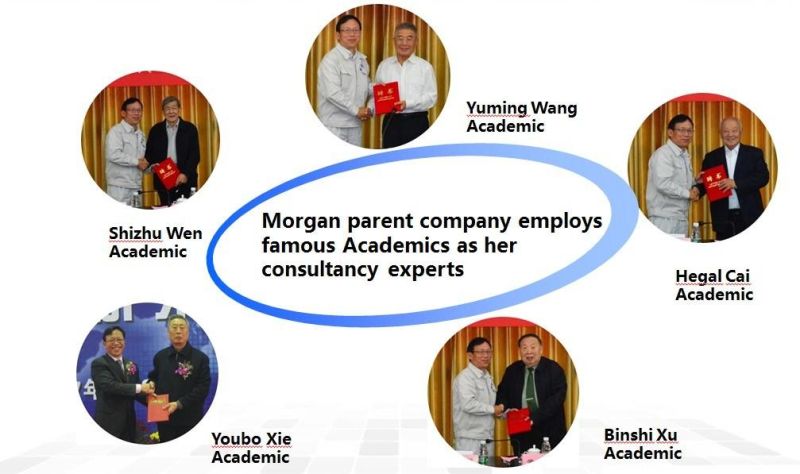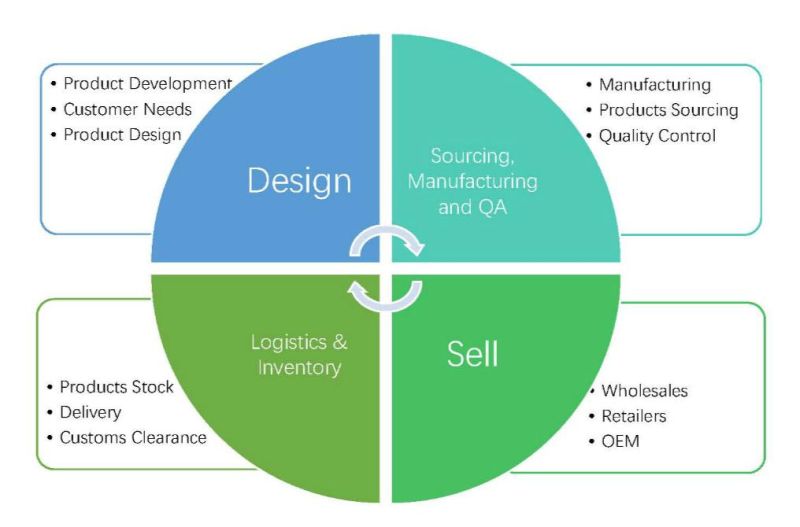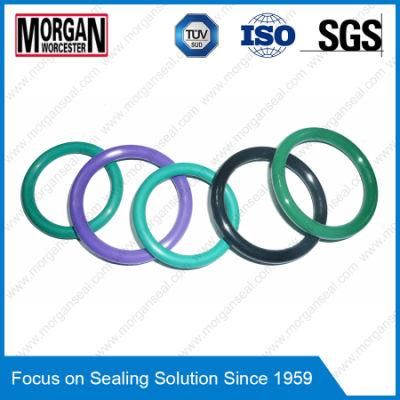
American As568 Standard Viton/Nitrile Rubber O-Ring
Guangzhou Morgan Seals Co., Ltd.- Material:NBR,Viton,EPDM,Silicone Rubber or Customized
- Application:Machinery, Industrial Component, Electronic Product, Vehicle, Household Appliance
- Effect:Fixture&Sealing
- Cross-Section Shape:O-Rings
- Certificate:ISO 9001:2008
- OEM/ODM:Yes
Base Info
- Model NO.:AS568
- Production Period:Within 30 Days
- Color and Dimension:Accept Customized Products
- Transport Package:Carton,Bag
- Specification:AS568
- Trademark:morgan
- Origin:China
- HS Code:4016931000
- Production Capacity:1000000PCS,Month
Description
Materials
Morgan O-rings Material Includes Nitrile rubber, fluorine rubber, ethylene propylene rubber, neoprene, chloroprene rubber, silicone rubber and so on.
NBR (Nitrile Butadiene Rubber)
Nitrile rubber (NBR) is the general term for acrylonitrile-butadiene copolymer. The ACN content can vary between 18% and 50%. While the acrylonitrile content is important, the resistance to oil and fuel is more so. Conversely, the elasticity and compression set are not as good. The NBR has good mechanical properties and good wear resistance. However, its resistance to atmospheric agents and the ozone is relatively low.
Mineral oils and greases
Fire-resistant fluids (HFA, HFB and HFC)
Diluted acids, alkaline and saline solutions for low temperatures
Water (up to +100°C max)
Aromatic hydrocarbons
Chlorinated hydrocarbons (trichlorethylene)
Polar solvents (ketone, acetone, acetic acid, ethylene-ester)
Strong acids
Glycol-based brake fluids
Atmospheric and ozone agents
-40°C / +100°C with special NBRs
Fire-resistant liquids (HFD)
Silicone oils and greases
Mineral and vegetable oils and greases
Aliphatic hydrocarbons (propane, butane, petroleum)
Aromatic hydrocarbons (benzene, toluene)
Chlorinated hydrocarbons (trichlorethylene)
Petrol (including high alcohol content)
Atmospheric and ozone agents
Ammoniac gas
Organic acids with a low molecular weight (formic and acetic acids)
-40°C / +200°C with special FKMs
Glycol-based brake fluids (Dot 3 & 4) and silicone-based brake fluids (Dot 5)
Organic and inorganic acids
Cleaning agents, sodium and potassium alkalis
Hydraulic fluids (HFD-R)
Silicone oils and greases
Polar solvents (alcohols, ketones and esters)
Atmospheric and ozone agents
Hydrocarbons
Low impermeability to gas
Mineral and vegetable oils and greases
Fire-resistant fluids (HFA, HFB and HFC)
Diluted acids, saline solutions and bases for low temperatures
Water and steam up to +150°C
Atmospheric and ozone agents
Polar solvents (ketones, esters and ethers)
Strong acids
-40°C / +150°C with special HNBRs
Moderate water temperature
Diluted saline solutions
Atmospheric and ozone agents
Chlorinated hydrocarbons with a low molecular weight (trichlorethylene)
Aromatic hydrocarbons (benzene, toluene)
Fuels
Aromatic hydrocarbons with a low molecular weight (benzene, toluene)
Atmospheric and ozone agents
Aromatic and chlorinated hydrocarbons
Water and steam
Acids, alkalis and amines
-35°C / +150°C with special ACMs
Aggressive mineral oils
Atmospheric agents
Water
Strong acids
Brake fluids
Gearbox oils
ATF oils
Silicone oils and greases
Water and water-based solvents for use at low temperatures
Refrigerant fluids
Ammoniac
Carbon dioxide
Atmospheric and ozone agents
Aliphatic hydrocarbons (propane, butane, petroleum)
Glycol-based brake fluids
Chlorinated hydrocarbons (trichlorethylene)
Polar solvents (ketone, acetone, acetic acid and ethylene-ester)
Polar solvents (ketones, esters, ethers)
Organic and inorganic acids
Water and steam
High-vacuum systems
PFPE
Chemical compatibility
A "Chemical compatibility guide" catalogue can be downloaded from the Literature section. You can also use our online "Chemical compatibility" tool free of charge.
These two tools enable you to measure the behaviour of our materials that come into contact with the majority of existing fluids. The data displayed is the result of rigorous testing at the ambient temperature and takes previous publications into consideration. Test results are not fully representative because of the specific features of your application. The tests performed actually do not consider additives and impurities that may exist under actual conditions of use, nor the potential elevation of temperatures. Other parameters can also alter the behaviour of our materials, such as the hardness, persistence, abrasion, etc. We therefore recommend performing your own tests to verify the compatibility of our materials depending on your specific application. Our technical team can provide you with any additional information.
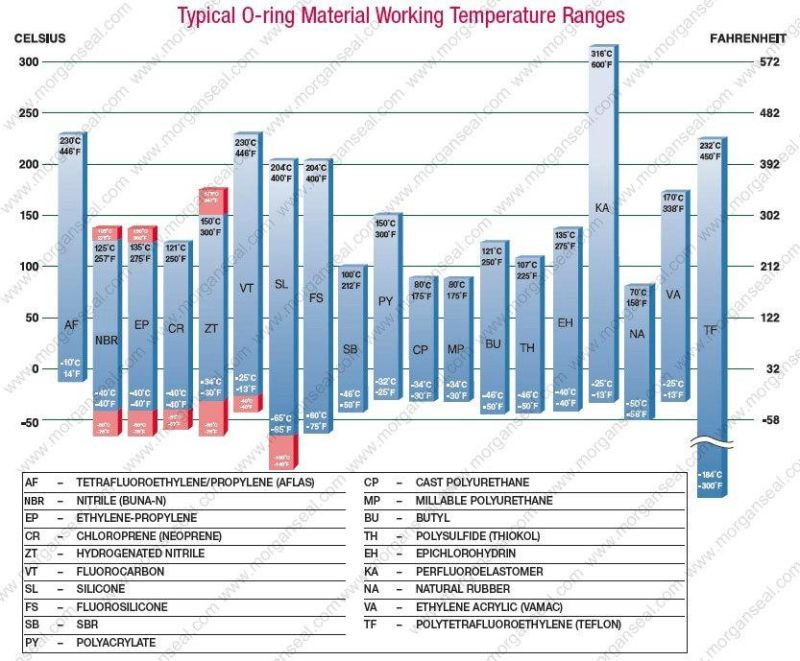
o-ring sizes:
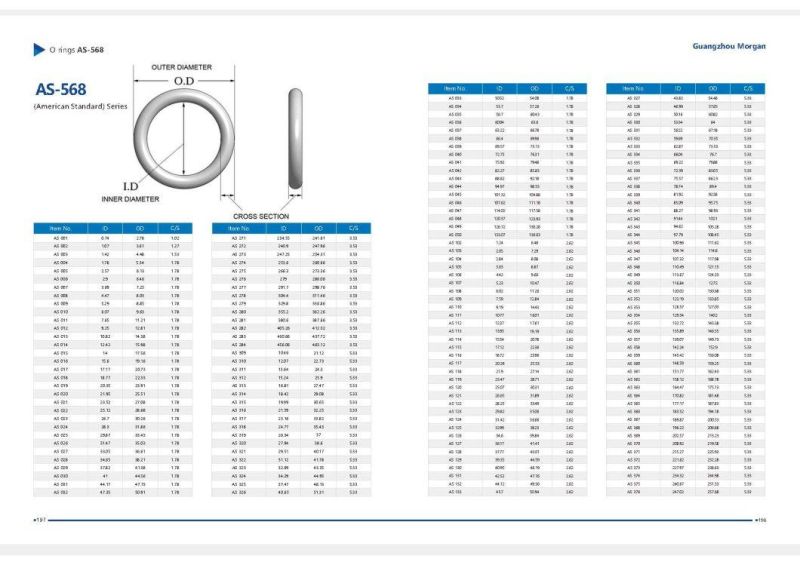
Guangzhou Morgan Seals Co., Ltd. has the biggest vulcanizing machine(4000T) and different kinds of seal moulds. So for the non-standard o ring, oil seals, hydraulic seals, please do not hesitate to contact with us. The following is the the picture Morgan Production Line and Warehouse
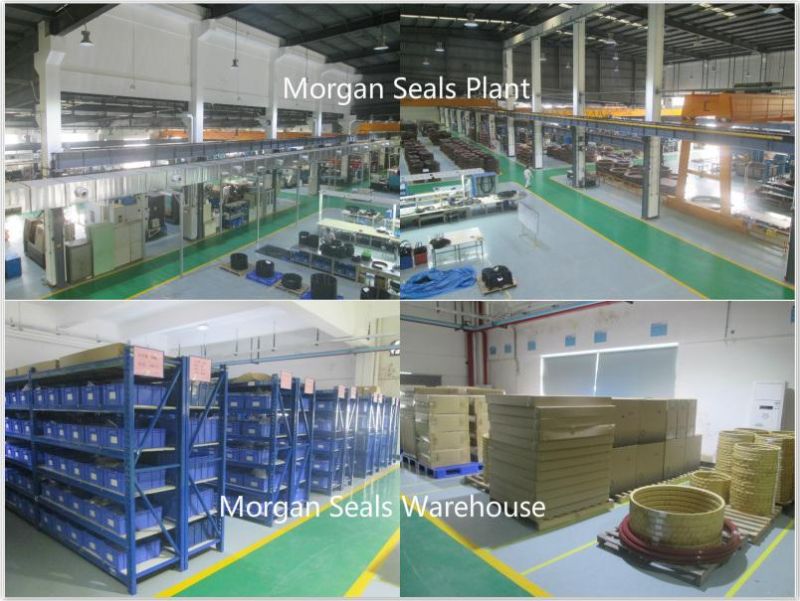
Our services:
Guangzhou Morgan Seals Co., Ltd the expert in sealing solution field who combines the rich seals research and production experience of her parent firm with the advanced technology and administration of Morgan, Worcester. Morgan Seals Research and Development ability is based on her parent firm who has won awards as scientific research achievements for more than 1000 projects and over 200 of them won scientific and technological progress prizes of municipal, provincial, ministerial and national levels. At the same time, it also has one National Certified Laboratory, one National Engineering Research Centers and three Industry Level Inspection Centers.
